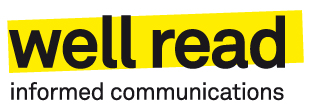I usually introduce myself as a storyteller at networking events. I’ve been helping charities and the public sector to tell their stories for more than twenty years. In this post I share with you some of what I’ve learnt honing my craft…
You’d be forgiven for thinking that all great stories have a beginning, a middle, and an end. But in PR, the best stories often end with a question, a ‘what next’ and crucially, a compelling call to action.
Of course, in novels the story can unfold over several hundred pages, as we get to know the key characters, their lives and the issues they face. For a PR storyteller, the trick is being able to describe the individuals in our story quickly (be they beneficiaries, or organisations that can change policy or hold the purse strings). We then need to convey the environment (the problem, the struggle, the prejudice…) and finally, describe how YOU, the reader, and the main protagonist can play a role.
Any good storyteller will capture their reader’s attention straight away – a punchy headline, killer statistic or compelling image can help with that. Your story should also resonate with your target audience. Whether you’re writing for a professional journal or the local press, then make sure your story strikes a chord with them. Local and regional news will want local case studies, or to know how you’re having an impact locally; a professional journal will want to understand what new intelligence or insights you’re bringing to the sector, or existing body of knowledge. Think about what’s going to cut the mustard with the editor – or for a quick and dirty guide just watch Press on catch up and you’ll get the gist!
I usually start by asking ‘So what? Why should people care? What’s the problem you ‘re trying to fix?’ The ability to shock or provide a wake up call, is another tactic used to garner traction – be that the melting of the ice caps or the shocking rise of poverty. Get researching all the evidence available and any data to back up your argument and present it in an easy to understand way – such as a year on year comparison or an infographic.
Humour is another great tactic you can employ in storytelling – listen to the Ken Robinson Ted talk ‘Do schools kill creativity’ and you’ll understand how this works… he tells funny stories, you laugh, you warm to him, these funny stories also illustrate important arguments – namely that the classroom isn’t always the best place for creative kids to flourish. This tactic is best suited to speeches and blogs where a more conversational style is acceptable and can also work in social media posts – typically Facebook, where followers are seeking out information and entertainment.
Finally, remember the power of images and film to pack an emotional punch or illustrate your story. The point is that it’s really worth the investment to get good photos to issue to the press or use on your website. So many clients simply don’t have the budget, or wont commission good photography, but really I do think it’s a worth developing a bank of images to use in your publicity. If budget is a problem, consider investing in a decent digital camera and sending one of your team on a photography course. Indeed, most smartphones take pretty decent images these days and with a bit of knowhow about how to set up a good shot, you’re half way there. Another option is to approach your local college to see if any of their students would like to get involved with your project. Many are happy for the opportunity to build up their portfolio.
Of course, if you want some help telling your charity’s story, I’m always happy to chat – and the coffee and cake is on me!
Kate Dawson of Well Read PR provides communications support to charities, social enterprises and public sector organisations. She is also editor of The Good Times e-zine, which shares the impact and learning from the third sector and other organisations working to bring about social change across Derbyshire and Nottinghamshire.

